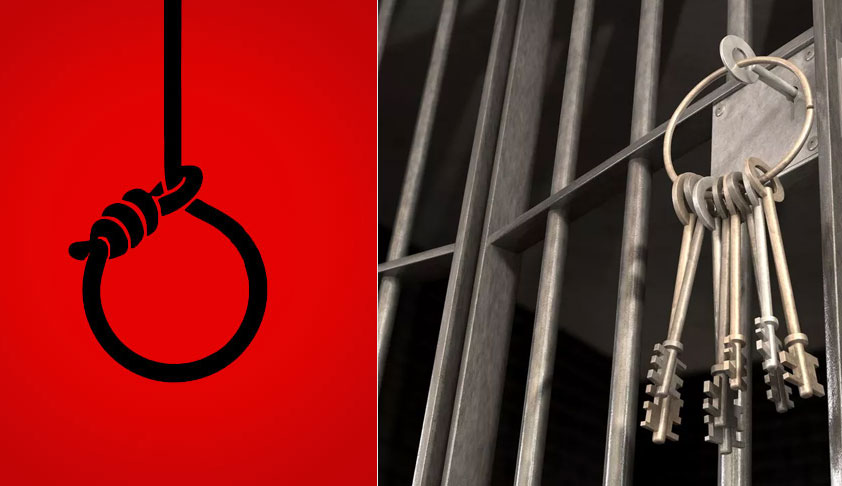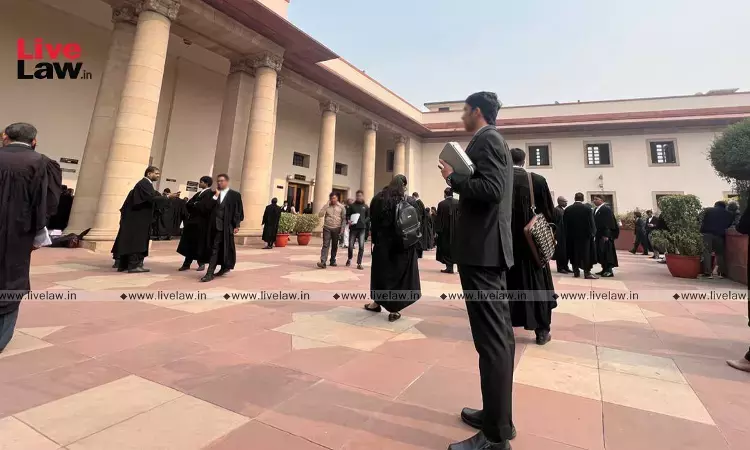Life Imprisonment Without The Possibility Of Release – The Many Constitutional Sins Of Sriharan

The Supreme Court validating sentences of life imprisonment without the possibility of release by excluding remission raise questions about both the desirability of such a punishment and also about the serious disruption in the separation of powers.The Indian Supreme Court has established in several judgments that a sentence of life imprisonment means imprisonment till the end of life subject...
The Supreme Court validating sentences of life imprisonment without the possibility of release by excluding remission raise questions about both the desirability of such a punishment and also about the serious disruption in the separation of powers.
The Indian Supreme Court has established in several judgments that a sentence of life imprisonment means imprisonment till the end of life subject to statutory powers of remission under Section 432 of the Code of Criminal Procedure, and constitutional powers under Articles 72 and 161. (See Gopal Vinayak Godse v. State of Maharashtra, Maru Ram v. Union of India).
However, in 2008, in Swamy Shraddhananda v. State of Karnataka , it upheld the validity of sentences where the prisoner is debarred from earning remission and from being eligible to be considered for premature release for either the rest of their lives, or for a specified period of 20, 30 or more years, depending on the discretion of the court . This received the imprimatur of a constitutional bench in 2015 in Union of India v. V.Sriharan (with a dissenting opinion of Lalit and Sapre, J.J).
This post attempts to argue, firstly, that the punishment of doing away altogether with executive processes of remission and premature release in a sentence of life imprisonment is inherently a flawed penological practice. Secondly, this post will argue that the act of creating and imposing such a punishment by the judiciary has the effect of disturbing the constitutional balance and separation of powers. This post will look specifically at Shraddhananda and Sriharan to argue that the ratio propounded is based on questionable reasoning, and the effect of it is that what is essentially the prerogative of the executive, that is the function of monitoring and incentivizing reform, has been usurped by the judiciary. It will contend that the judgments effectively create a new punishment, something that should be the exclusive domain of the legislature.
It is important to understand the processes of remission and periodic review for premature release not as privileges extended to the prisoner by a benevolent state, but as functions that are essential to the carceral process. Doing away with such functions amounts to abdicating reformation as a legitimate object of a prison sentence altogether. A reasonable expectation to have one’s sentence reviewed based upon a variety of factors, including prison behavior, is not an incidental and dispensable aspect of the sentence, but a part of the very right to life of the prisoner. While the Indian Constitution does not have a “cruel and unusual punishment” clause like the United States or the European Convention on Human Rights, prisoner’s rights are a part of their right to life, under Article 21, curtailed only to the extent permissible by the Constitution. The Supreme Court has stated that the process of reforming a convict under humane conditions in prison is motivated by “human dignity jurisprudence”, and is part of the right to life under Article 21 (Shabnam v. Union of India, T.K Gopal v. State of Karnataka ). It is arguable, therefore, that executive functions of remission and premature release cannot be done away with altogether either by judicial discretion, executive fiat or even for that matter by legislation, purely because of their inherent value to the penological system and to “human dignity jurisprudence” under Article 21 of the Constitution.
International instruments like the International Covenant on Civil and Political Rights and the UN Standard Minimum Rules for the Treatment of Prisoners (also known as the Mandela Rules) reflect the importance of the reformative process while executing a sentence of imprisonment. The European Court of Human Rights, in Vinter v. United Kingdom came to the finding that a law providing for a whole life sentence without the prospect of release or review of sentence would amount to inhuman and degrading punishment, falling foul of Article 3 of the ECHR.
Even apart from a normative argument about the undesirability of such a punishment, a closer examination of the legal reasoning in Shraddhananda, upheld in Sriharan indicates that the Supreme Court overstepped into the domain of both the executive as well as the legislature. The judgment in Shraddhananda was based primarily on the presumption that a sentence of life imprisonment is an euphemism for 14 years. During the proceedings in Shraddhananda, the relevant prison rules for calculating remission for lifers the states of Karnataka and Bihar were brought before the Court. Both states had rules by which, for the purpose of calculating remission, a sentence of life imprisonment would be deemed to be a sentence of twenty years. The rules declared twenty years inclusive of remission earned as the upper limit of imprisonment in case of lifers, and not as a condition for eligibility to be considered for premature release. This deeming clause was clearly in the teeth of a long line of cases that establish that a sentence of life imprisonment means the rest of natural life. The correct step for the bench in Shraddhananda would have then been to declare the deeming clauses bad in law. However, the Court used these two examples to come to the conclusion that as a rule, all lifers are released after a lapse of 14 years. This conclusion gave the Court the legal basis to usurp what is essentially the prerogative of the executive, that is, the power to decide whether or not to grant premature release on a case to case basis.
There appears to be leap of judicial reasoning here from the premise to the conclusion, as the conclusion in the ratio of Shraddhananda (upholding the validity of life without remission as a sentence) does not speak to the problem posed by the premise, which is essentially that of certain state government rules being in the teeth of settled law.
Once we establish, as argued above in this post, that there is an inherent desirability to retaining processes of remission and review, it follows that the proper authority for such processes is the executive, and not the judiciary at the sentencing stage. The matrix of considerations before a judge while deciding an appropriate sentence will be very different from those before a remission board fourteen or twenty or thirty years down the line. The board will have to consider factors such as prison behavior, quantity and quality of work undertaken, health, recidivism, to name a few. These are factors that a sentencing judge cannot possibly foresee, and therefore it follows that the judge, at least at that point in time, cannot pass such a sentence.
To take the argument further, the powers of the executive under S.432, CrPC are not unchecked. Once the executive authority takes a decision, it is always open for the affected parties to approach the constitutional courts for judicial review (Epuru Sudhakar, Bangal v. B.K Srivastava). However, even the Courts in judicial review cannot direct the executive to exercise or refrain from exercising their powers, but can only direct the decision to be re-considered. (State (Govt. of NCT) of Delhi v. Prem Raj, State of Rajasthan v Mohammad Muslim Tagala.) It stands to reason that a power that cannot be taken over by the judiciary in review, cannot be usurped by it under the guise of sentencing, no matter how grave the crime or how generous the remission policy be.
Apart from usurping executive powers, the reasoning of Shraddhananda and the majority in Sriharan has the effect of trenching into the powers of the legislature. Both judgments reason that the special category of “life without remission” is not a new punishment but a re-configuration of life imprisonment simpliciter, as that punishment in any case means incarceration until death. What the judgments fail to consider is that apart from the duration of the sentence, it is the quality and condition of incarceration that marks one punishment as different from another. A term of simple imprisonment for six months is a different punishment from rigorous imprisonment for six months, or from six months in prison with solitary confinement, subject to the conditions imposed by Section 73 and 74 of the Indian Penal Code. By the same principle, spending a lifetime in prison without the carrot and stick regime of remission, and without the slightest hope of a possible reintegration with society is a qualitatively different punishment from an unqualified life sentence, even if both sentences entail a lifetime in prison.
What the Supreme Court did, therefore, was effectively create a new punishment, and in the process infringe upon what is the dominion of the legislature. It is settled law that the power to create a new category of punishment is a purely legislative function, deployed in response to pulls and anxieties only the legislature is competent to respond to (Bachan Singh v. State of Punjab, Navdeep Singh v State of Haryana , Vikram Singh v. Union of India).
The dissenting opinion of Lalit and Sapre, J.J, in Sriharan observed that the legislature has, when required, created new punishments where they have expressly done away with processes of remission and premature release. The example cited in the dissent is of Section 32-A of the Narcotic Drugs and Psychotropic Substances Act, 1985 which does away with any prospect of remission for a sentence imposed under the statute. Similarly, by introducing S.433A of the CrPC, the Parliament legislated into being a new category of prisoners deserving a mandatory minimum of 14 years before they can be eligible for consideration for premature release. Once established, as this post argues, that life without remission is indeed a new punishment, it follows that the dissenting opinion in Sriharan is the correct elucidation of the law, and both Shraddhananda and the majority in Sriharan have the effect of trenching into the domain of the legislature, based upon questionable presumptions.
It is important for a constitutional democracy to retain at least some form of institutional investment in the reformative process in all prison sentences. Even apart from the normative desirability of such processes, the legal framework provided by the Supreme Court in Shraddhananda and Sriharan to do away with reformative processes altogether under the guise of sentencing raises deep concerns by disrupting the constitutional balance between the powers of the legislature, judiciary and the executive.
Amartya Kanjilal is an Associate (Litigation) at Project 39A. He has worked as a Judicial Researcher in the High Court of Delhi, and also practiced as an advocate in different courts and tribunals in Delhi.
This article was first published here





